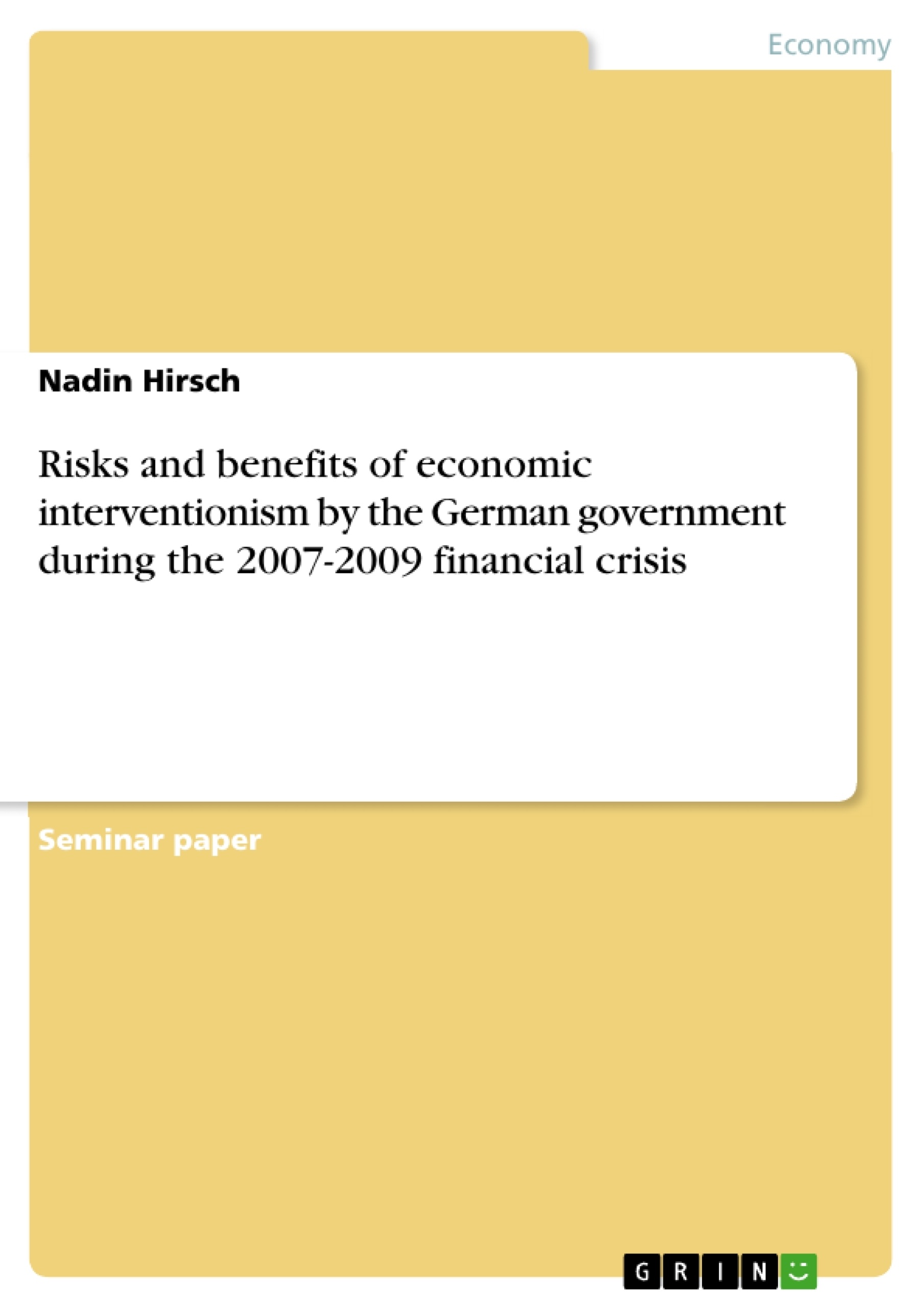1. Introduction
The global financial crisis that became obvious in the summer of 2007, led to a severe economic crisis about one year later. It was mainly caused by the bankruptcy of “Lehman Brothers”, one of the largest US investment banks, which was forced to file for liquidation after suffering huge losses in the mortgage market and resulted in millions of additional unemployed all over the world, in both developing as well as highly developed countries. Within weeks the Dow Jones Index fell from over 11,000 to below 7,000 points while the German stock market index, DAX, fell from 7,500 to below 4,000 points.
The apparent helplessness of economists at that time forced the German government to implement strong interventions in the economic market. This paper deals with the risks and benefits of interventionism during the 2007- 2009 financial crisis, using the example of Germany.
Inhaltsverzeichnis (Table of Contents)
- Introduction
- General explanation of the term “economic interventionism”
- Reasons for economic interventionism during a financial crisis
- Types of economic interventions during a financial crisis
- Soft protectionism through trade and investment policy measures
- Fiscal policies
- Financial policies
- Risks and benefits of selected federal interventions in Germany
- Risks and benefits of soft protectionism through trade and investment policy measures
- Risks and benefits of fiscal policies
- Risks and benefits of financial policies
- Effects of the economic interventionism
- National and international market reactions
- Consequences of interventions for international markets and trade
- Summary
Zielsetzung und Themenschwerpunkte (Objectives and Key Themes)
This paper examines the risks and benefits of economic interventionism by the German government during the 2007-2009 financial crisis. It analyzes how government intervention impacted the German economy and explores the potential advantages and drawbacks of various interventionist measures.
- The concept of economic interventionism and its application in a mixed economy.
- The impact of the 2007-2009 financial crisis on the German economy.
- The specific types of economic interventions implemented by the German government.
- The potential risks and benefits associated with different interventionist measures.
- The consequences of economic interventionism for national and international markets.
Zusammenfassung der Kapitel (Chapter Summaries)
The introduction provides a general definition of economic interventionism and discusses the reasons behind government intervention during a financial crisis. It examines the specific context of the 2007-2009 financial crisis and its impact on the German economy.
Chapter 2 delves into various types of economic interventions, including soft protectionism through trade and investment policy measures, fiscal policies, and financial policies. Each type of intervention is discussed in detail, outlining its potential mechanisms and aims.
Chapter 3 focuses on the risks and benefits of selected federal interventions in Germany. It examines the potential advantages and drawbacks of soft protectionism, fiscal policies, and financial policies, offering a nuanced perspective on their potential impact on the German economy.
Schlüsselwörter (Keywords)
Economic interventionism, financial crisis, German economy, soft protectionism, trade policy, investment policy, fiscal policy, financial policy, risks, benefits, national markets, international markets, trade, market reactions, consequences.
- Quote paper
- Nadin Hirsch (Author), 2011, Risks and benefits of economic interventionism by the German government during the 2007-2009 financial crisis, Munich, GRIN Verlag, https://www.grin.com/document/179509



